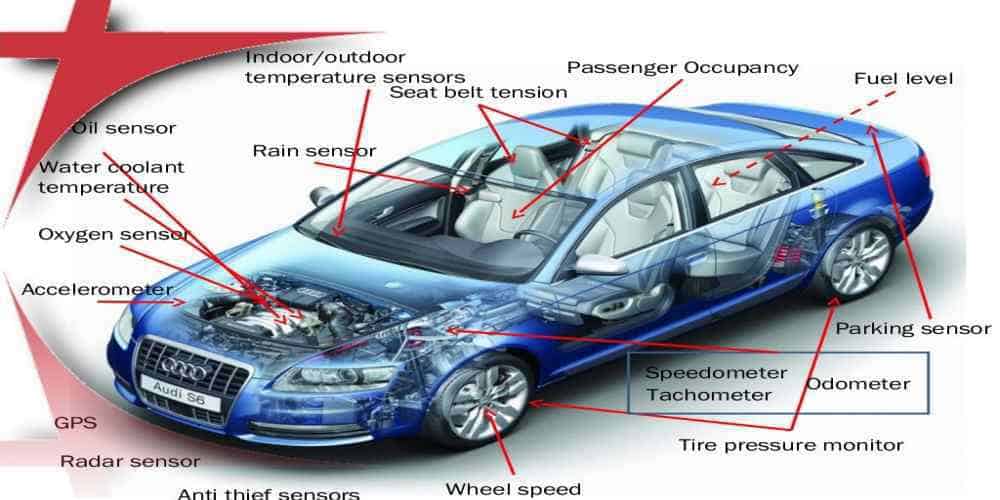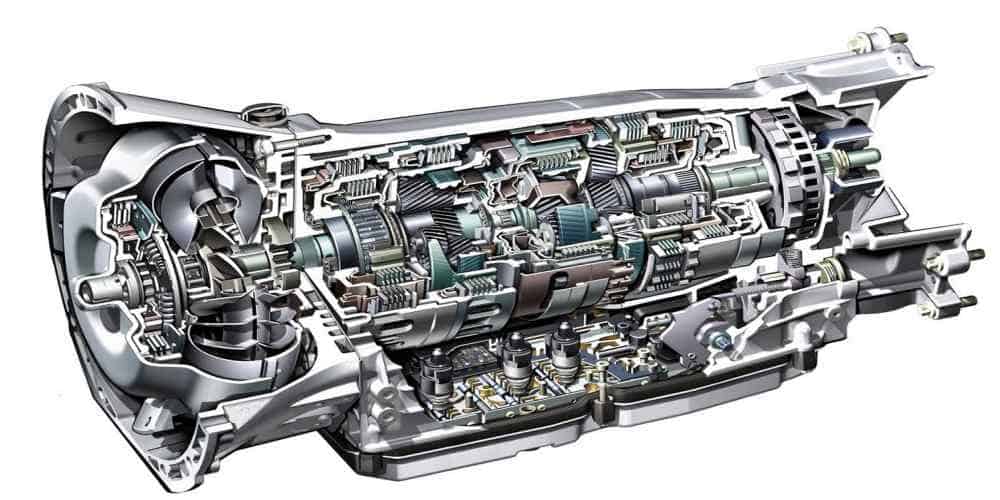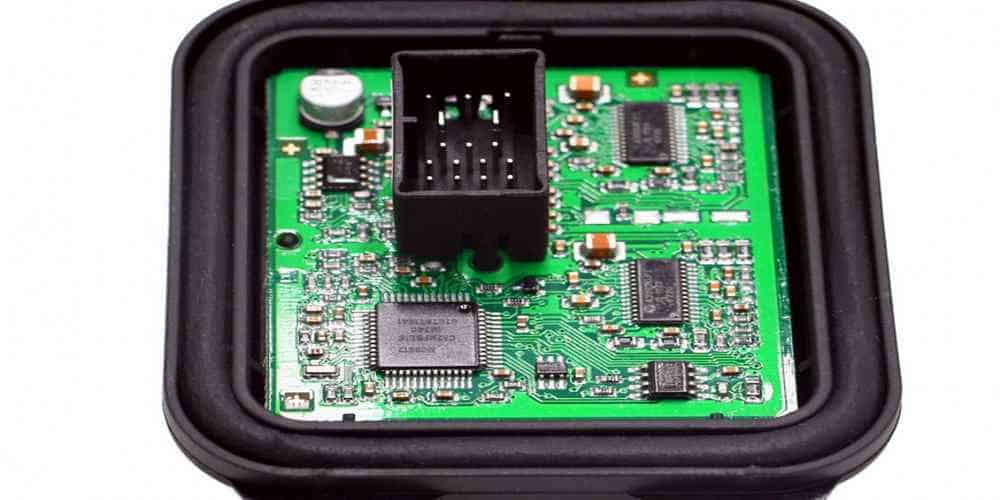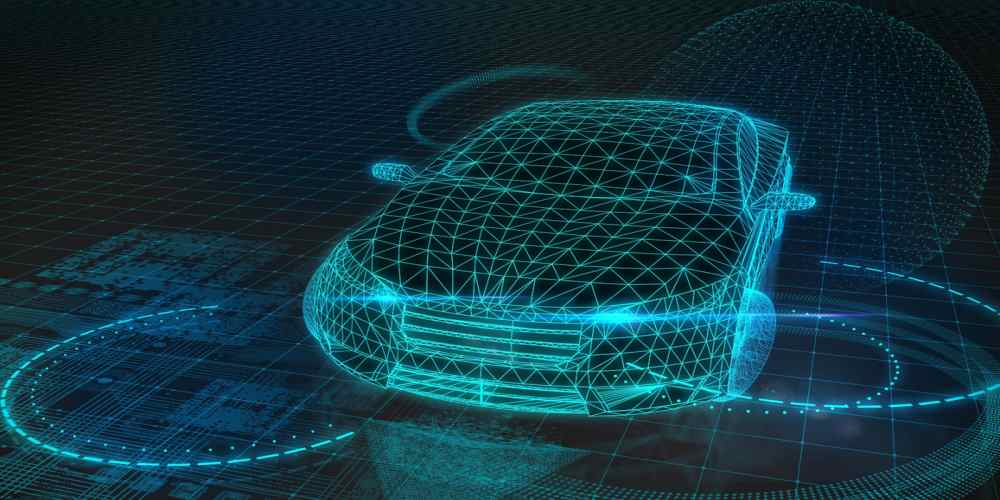When most people hear about automotive electronics and the role that they play in vehicles, the very first thing that comes to their mind is the variety of automotive electronic systems in use in various automobiles, for example, electronic controllers, safety airbags, music systems, and much more. However, automotive electronics also encompasses other electronics, for instance, LED brake lights, headlights, etc. Actually, every single module that automobile manufacturers utilize in cars falls under modern electronic devices. Previously, automotive electronics were solely used to control the car’s engine effectively. However, as of the 21st century, technological advancements have seen automotive electronics assisting car drivers in complicated tasks. Therefore, if you are a car enthusiast, it is crucial to learn about automotive electronics and get answers to questions such as: What are the latest automotive electronics? Which role do these latest automotive electronics play?

Automotive Electronics in a Nutshell
Various automotive electronic systems exist which you can use in vehicles for automotive operations, such as:
– Enhancing the driving act
– Improving the driver’s and the rider’s comfort while on the road
– Fuel efficiency and so much more
Moreover, many automotive gadgets have changed from traditional mechanical devices to electronic gadgets.
If you take a trip back to around 1980, you will find those cars at that time were only for transportation purposes. However, at this time, automobiles have been converted to auto electronic engines via comp-controlled systems. The transformation from the traditional automobile to these modern cars involves the integration of multiple electronic systems inside the automotive design.
Embedded systems in automobiles play a crucial role in automobile architecture. That is because they are utilized in multiple vital automotive applications, which include:
– Parking ability
– Radio
– Airbag systems
– Music systems
– Telematics
– Anti-lock braking systems etc.
Moreover, it’s crucial to note that most, if not all, electronic components utilized in cars can be digitally controlled to undertake various automobile operations. Additionally, electronic gadgets installed in vehicles can be classified into:
– Chassis electronics
– Safety devices
– Engine electronics and more
Types of Auto Electronics
Automobile electronics are DS (distributed systems) that we can classify into various types according to their roles and domain. These classes include:
– Integrated cockpit systems
– Electronic
– Entertainment systems
– Passenger comfort
– Driver assistance
– Passive safety
– Chassis electronics
– Transmission electronics
– Engine electronics
Engine Control Unit
An engine control unit or an ECU is an automotive electronic that handles the following tasks:
– Controls fuels injection in automobiles
– In petrol engines – this component controls spark timing for ignition purposes
Moreover, these component determines the engine’s internal positions using crankshaft position sensors so that ignition systems and injectors activate in an accurate manner. Even though these tasks sound like ones that people can handle manually, there is more than meets the eye.
The Ratios
Internal combustion engines are essentially large air pumps that power themselves using fuel. As air comes in, the engine must have sufficient fuel to sustain its operations while at the same time leaving enough fuel to help propel the vehicle when needed. The combo of air and fuel is commonly referred to as a mixture. However, when working with a mixture, you have to put a lot of things into consideration; otherwise, you will find yourself in one of these two situations:
– Having too much of the mixture will make the car engine go full throttle
– On the other hand, if you have an insufficient mixture, then the car engine will not power up the car
However, it’s not just the mixture amount that’s vital when dealing with a combustion engine. You also have to consider the mixture ratio:
– Little oxygen – too much fuel and you will have dirty combustion, which is pretty wasteful
– On the other hand, excess oxygen and little fuel will make the combustion process weak and slow
Earlier, the mixture ratio and quantity were controlled mechanically via a metering gadget known as a carburetor. However, as time passed, the automotive manufacturer had to find a way to handle this issue more efficiently, and the engine control unit came.
By using such systems, car manufacturers can meet these pretty strict mixture requirements in a flawless and autonomous manner. The engine control unit’s job is to control the ignition, ancillaries, and electronic fuel injection of the car engine using a numeric table and digitally stored math equations instead of utilizing analog means.
Precise Engine Fuel Management
The ECU must deal with multiple variables before deciding on the correct mixture ratios. It has to consider the following:
– Engine pumping efficiency
– Air pressure
– Varying filter restriction
– Fuel quality
– Fuel temperature
– Air temperature
– Coolant/engine temperature
– Engine demand
Moreover, to measure all these variables, manufacturers have to install multiple sensors that measure and apply their measurements’ results to logic found in the ECU programming unit. After receiving information from the sensors, the ECU computes and decides how to compensate for this variable in the mixture.
Transmission Electronics

Transmission electronics are generally crucial automotive electronics that control the transmission systems of the vehicle. These electronic components are primarily utilized when shifting the car’s gear to:
– Enhance the shift comfort
– To reduce torque interruption
The function of an auto transmission can be achieved via the utilization of the following:
– Various controls
– Multiple semi-auto transmissions, which include a fully-auto clutch
Communication between transmission control electronics and the engine control unit is usually achieved via exchanging sensor signals and information control for their unique process.
In some cars, the operations of ECM and transmission electronics are combined into one module known as a PCM or a Powertrain Control Module.
Sensors involved in Transmission Electronics
Transmission electronics usually rely on multiple sensors to function accurately. These sensors include:
– Crankshaft positions sensors
– Brake light switch
– Turbine speed sensors
– Engine coolant temp sensors
– Transmission fluid temp sensors
– Gear positions sensors
– Throttle positions sensors
– Wheel speed sensors
Actuators
Other than sensors, transmission electronics also have to rely on multiple actuators, which include:
– Solenoid actuated valves – these actuators are usually powered by various relays
– Pressure regulating solenoids – These solenoids include variable speed and force motor solenoids
– Torque converter clutch solenoid
– Shift Solenoid – These solenoids include electrical solenoids, which tend to be activated to effectively change gears.
Thanks to transmission electronics, modern auto transmissions are now more fuel efficient when compared to traditional cars that are entirely mechanical. Moreover, modern cars exhibit excellent reliability, enhanced vehicle handling, reduced engine emissions, and smoother gear shifting.
Chassis Electronics

Chassis electronic systems include various electronic subsystems in vehicles that effectively monitor various controls and parameters actively, for example:
– Anti-lock Braking System (ABS)
– Electronic stability program (ESP)
– Parking Assistance (PA)
– Traction Control System (TCS)
– Electronic Brake Distribution(EBD)
Passive Safety
Passive safety systems are all about practicing plans, learning, instructions, building, and apparatus to reduce results and incidents of traffic accidents caused by automobiles.
These incredible systems are usually set to function whenever they detect a smash occurring; otherwise, tries to stop it once it senses a dangerous condition, for example:
– Airbags
– The emergency brake aid system
– Hill descent control
Driver Assistance
Advanced driver assistance, which is commonly referred to as ADAS, is a vital system that helps automotive drivers when they are driving a car. These systems are developed bearing a human-computer interface which is secure.
ADAS systems are utilized to boost road safety and automobile safety. Moreover, these systems include various assistance, for example:
– Blind spot detection
– Park
– Speed
– Lane
– Control systems, for example, adaptive cruise
Common Advanced Driver Assistance Systems Applications
ADAS has multiple applications in the automotive industry, these include:
ACC (adaptive cruise control)
ACC is most helpful when the driver is driving on a highway. That is because, when drivers are on a highway, they usually find it challenging to efficiently monitor their car’s speed plus incoming vehicles for a prolonged period.
ACC can automatically slow down, accelerate or even stop a car, depending on various variables surrounding the vehicle while on the highway.
Pixel Light and Glare-Free High Beam
Pixel light and Glare-free beams utilize sensors to effectively adjust to the vehicle’s surroundings and the darkness without affecting oncoming traffic. These impeccable headlight applications detect the light of oncoming vehicles and then redirect the car’s lights away to prevent temporarily blinding road users.
Adaptive Light Control
ADL adapts the car’s headlights to any external light conditions. Moreover, this system alters the rotation, direction, and strength of the car’s headlight depending on two variables:
– Darkness
– The car’s environment

Auto Parking
Auto parking assists drivers in terms of identifying unseen areas when parking so that the driver can know when to wheel the vehicle and when to stop. In addition, cars with rearview cameras integrated into their system instead of simply relying on side mirrors tend to view their surroundings much better than traditional vehicles.
Moreover, some auto parking systems can even automatically park your vehicle without requiring the driver’s assistance via the utilization of various input sensors.
Autonomous Valet Parking
AVP is a modern tech system that functions via:
– Cloud services
– Network communication
– 5G
– Sensor meshing
The system can autonomously manage various cars in parking sections by utilizing all these resources. Sensors provide vehicles with data about their specific locations, the locations it needs to head to, and directions on how to get to that particular location in a safe manner.
All this info is evaluated methodically and then utilized to undertake steering, braking, and acceleration actions until the car parks safely.
Navigation Systems
Automobile navigation systems offer voice prompts and on-screen instructions to assist drivers in terms of following specific routes while keeping their concentration on the highway.
Some automotive navigation systems display accurate traffic data on the vehicle’s screen, while others go the extra mile by planning new routes for drivers to help them avoid traffic. Moreover, some advanced systems might even utilize enhanced technology to provide a heads-up to the driver to help reduce distractions.
Night Vision
The Night Visions automotive systems allow drivers to view objects they wouldn’t be able to view t night. Night visions system can be categorized into two classes:
– Active NV systems which project infrared light
– Passive NV systems which solely rely on thermal energy emitted by animals, cars, and other items.
In Car Entertainment Systems
Entertainment systems utilized in vehicles primarily include:
– Data access
– Navigation systems
– Vehicle audio
All these components form an entertainment and information system. Moreover, this system’s production methods can alternate depending on the manufacturer. For both software and hardware development, manufacturers utilize various crucial tools to accomplish the job.
As per infotainments features available on an automobile, this mainly depends on two main properties:
– The car’s price
– The car’s specifications
Therefore, you will find that expensive vehicles have more intricate infotainment features and impeccable processing power. Moreover, luxurious cars tend to also have digital services and applications such as Spotify.
However, even the cheapest or most basic infotainment must come bearing some impeccable features for example:
– Have a radio functionality
– Satellite navigations
– Access to various automotive information, for example – tire pressure, service interval, et cetera
Moreover, since cars are leaning more and more into the digital side, you can, with time, expect the info part of infotainment to be more crucial. For example, the inclusion of onboard SIM cards will give you direct access to the internet, where you can easily pull up weather forecasts, live parking info, et cetera.
Latest Automobile Electronics Innovations in the Automotive Industry
The latest automobile electronics innovations that most automotive manufacturing companies are adopting include the following:
Waymo
After conducting various experiments in different automobiles, waymo finally launched the first driverless vehicle. These Waymo driverless cars offer the rider a safe and secure self-driven experience.
After generating this vehicle, the company promised to create driverless cars accessible to the public.

Tesla Electric Vehicles
Tesla vehicles are modern-day cars that run on electricity instead of petrol. These cars hit the market in 2012 and have become pretty popular since they are environmentally friendly. Moreover, over time, tesla developers have been adding automotive gadgets to make these vehicles futurists.
Honda Prius
The Honda Prius is a complex high-tech hybrid electronic vehicle developed by the Toyota company in 1997. These vehicles are rated as being among the cleanest cars, with minimum to no smog formation.
The Role of Auto Electronics in the Commercial Automotive Electronics Industry
Vehicles in the commercial market are constantly evolving, considering various variables that make the driving or riding experience better. Moreover, auto manufacturers are trying to implement innovative strategies into the megatrend to make this vehicle more optimized.
The commercial cars sector is at a crucial junction as per tech development, growth, and globalization in emerging markets which are set to try and alter the system of the existing industry.
However, in the center of altering this major market lies automotive electronics which play a significant role in commercial vehicles.
Some major vehicle systems which rely on auto electronics include:
– Driving comfort
– Driving safety
– Power train
All these are crucial elements that dictate the luxury levels of an automobile. Moreover, within the automotive electronics sector, electric energy, connected vehicle, and ADAS are considered groundbreaking tech pieces that could alter the entire industry.
Diesel Systems
Commercial cars bearing diesel systems are now available in multiple parts of the world. Moreover, these systems have comprehensive system intelligence, which helps them make heavy duty. As a result, medium and light-duty vehicles are more powerful, cleaner, and more economical.
Safety
In the commercial market, safety is a critical element that all manufacturers must keep in mind, and the same applies to the commercial automobile market. As per the 21st century, the focus has moved from regular old passive safety, which helps reduce the impact whenever an accident occurs, to active safety, which prevents an accident from occurring. Examples of active safety systems include:
– Adaptive distance control systems
– Anti-lock braking systems
Moreover, in the heavy commercial, automotive sector, you will find airbags as one of the most effective components when it comes to automobile safety. Moreover, most countries are now making a policy that ensures each vehicle gets an ABS before it hits the commercial market. That is because statistics show that ABS systems are pretty effective in terms of reducing the number of accidents that occurs on roads.
Comfort
Manufacturers are trying to implement new methods to help reduce drivers’ fatigue while driving for long hours. Moreover, these systems will also be able to detect drowsiness and act effectively. Using this type of technology, car manufacturing companies could save a lot of lives.
Conclusion
The utilization of automotive electronics by various consumers is growing day by day. That is because these components improve the driving and riding experience of the consumers while simultaneously helping them save up on fuel costs and time. Moreover, intelligent vehicles bearing multiple automotive electronics bear more features. Hence they are more energy efficient, comfortable, and secure. Therefore, if you are looking to purchase a car, we recommend you try out smart vehicles. They will help you save up on a lot of things. Moreover, we hope this article has given you all the answers you were looking for regarding automotive electronics.


